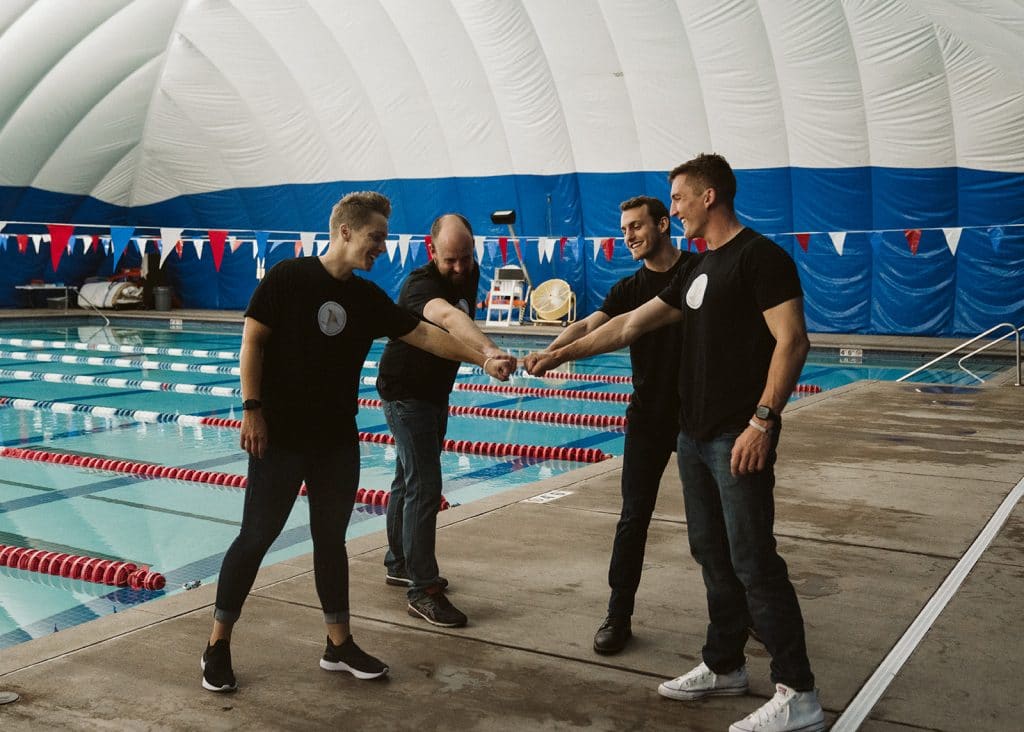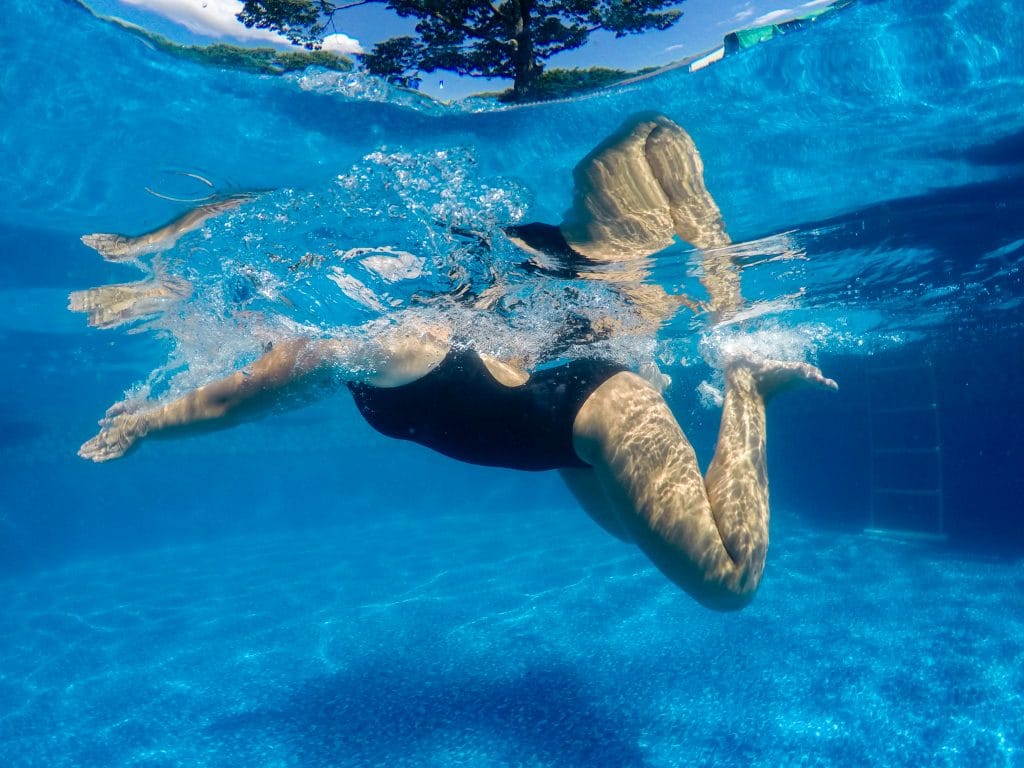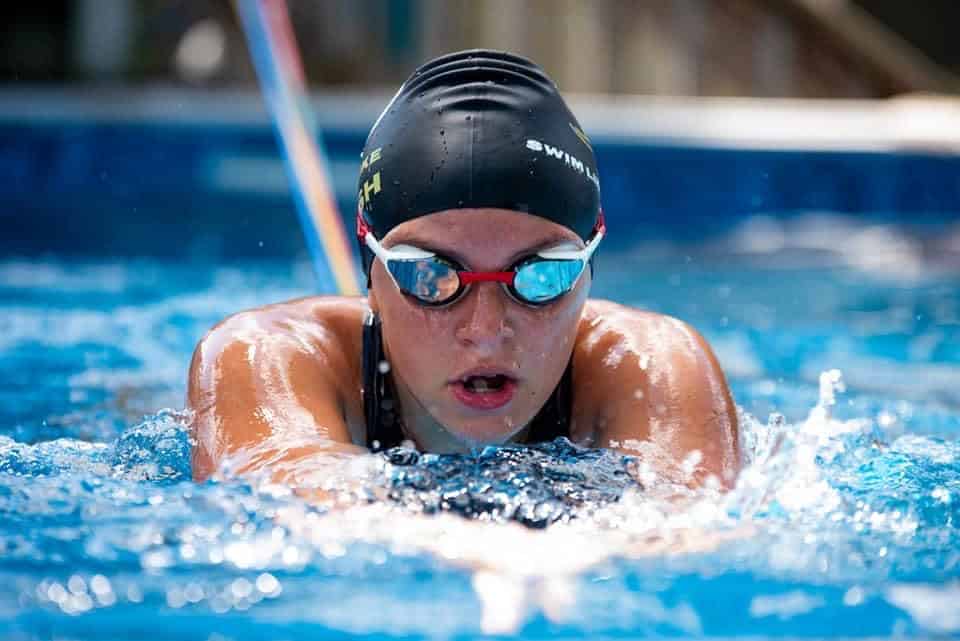Even though Breaststroke is technically the slowest swimming stroke, there is no less of a NEED FOR SPEED than with any other stroke. And speed in Breaststroke is incredibly dependent on a swimmer keeping their momentum going. That means not making any common swimming mistakes that slows down their forward momentum. I’ve said it before and I’ll say it again – Breaststroke is by far the most technical of all the strokes. That means that these common swimming mistakes tend to be more technical than we see in other strokes.

Let’s Get Started…
Today we’re going to learn about the 4 MAJOR Common Mistakes I see over and over again from swimmers who are swimming the slowest swimming stroke. All of these mistakes stop the swimmer from continuing their forward momentum. What that means is they then have to use MORE energy to get that momentum back again instead of using that energy towards going faster. Killing your momentum is one of the worst things you can do in the slowest swimming stroke (and really in all strokes). You’re losing momentum and making a common Breaststroke mistake if…
You Have an Inability To Hold Your Breath
Being unable to hold your breath for a long time is a CRUCIAL loss of time in Breaststroke. Most of the stroke is spent under the water, so breath control is the key to maximizing forward momentum as the stroke cycle completes and glides forward.
Also, I oftentimes see swimmers who aren’t able to hold their breath missing out on the propulsion that should be gained from their pullouts. That’s because the lack of oxygen forces a swimmer to either skip the pullout entirely or rush through the pullout by skipping a proper dolphin kick. We race at our fastest speed off the wall. So, losing this momentum is a sure way to miss out on crucial milliseconds, especially for the slowest swimming stroke.
Finally, holding your breath is crucial for maintaining and holding a swimmer’s bodyline. If you need ideas on how to help your swimmers in this area, check out This Video!
You’re Unable to Flex Your Toes Out For the Kick
Being unable to flex your toes out for the Breaststroke kick means that a swimmer isn’t able to “catch” the water with their feet. Without the catch, the feet just slip through the water and don’t generate significant propulsion. A lot of times this results in an illegal kick, or it could just be slow and inefficient. Coaches, if a swimmer has this problem, we usually recommend that you look for inflexible hips. Although it might seem like the problem is in the ankle, it can be beneficial to look at joints that are higher up to determine the root cause. Read more about the Breaststroke Kick HERE.

Your Timing is Off (The Slowest Swimming Stroke Actually Has The Hardest Timing Component!)
If a swimmer’s timing is off, they’re likely losing momentum in many different areas of the stroke. The first place to look at is where they’re trying to “get through” the stroke. What this means is that a swimmer should be KICKING through the stroke rather than PULLING through the stroke. When a swimmer’s timing is off, oftentimes they’re initiating the timing through the pull rather than letting the kick determine their tempo. The kick should BOTH finish the stroke and initiate it. That’s why the kick is the key to timing.
You’re Not Maximizing the Recovery
Oh, the recovery. As one of the more visible parts of the stroke, a lot of times coaches and swimmers focus the most on this problem. It’s important to check off all of the other common mistakes before arriving at the recovery. BUT, the recovery is also a very common mistake that I see in swimmers.
Common mistakes during the recovery include:
1. Pulling too far back on the pull (thus “slipping” and losing out on the catch)
2. Recovering too slowly (which spends just as much energy without gaining you the momentum that the recovery should generate)
3. Or recovering inefficiently (I see weird, over the water recoveries all the time that would fall into the inefficient category)
Foundations of The Slowest Swimming Stroke For Coaches

If you want even more on the slowest swimming stroke, be sure to check out our blog post on Breaststroke Video Analysis! That’s all for now.
Do you find Breaststroke to be the most technically difficult stroke? Let us know in the comments!
Until next time,
Abbie Fish and the Swim Like A. Fish Team

4 Responses
Im willing to join by learning skills of swimming
Sweet!
“holding the breathe inside water”……… Does this mean to exhale slowly (like trickle exhale) or is it like holding the breathe completely
Slowly exhaling!